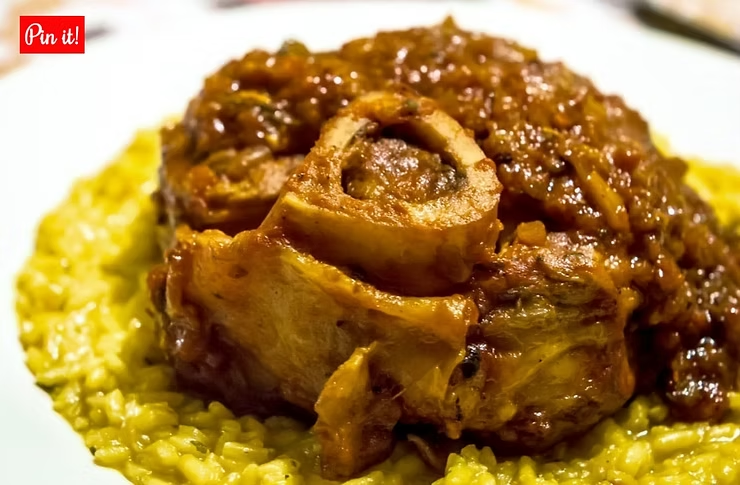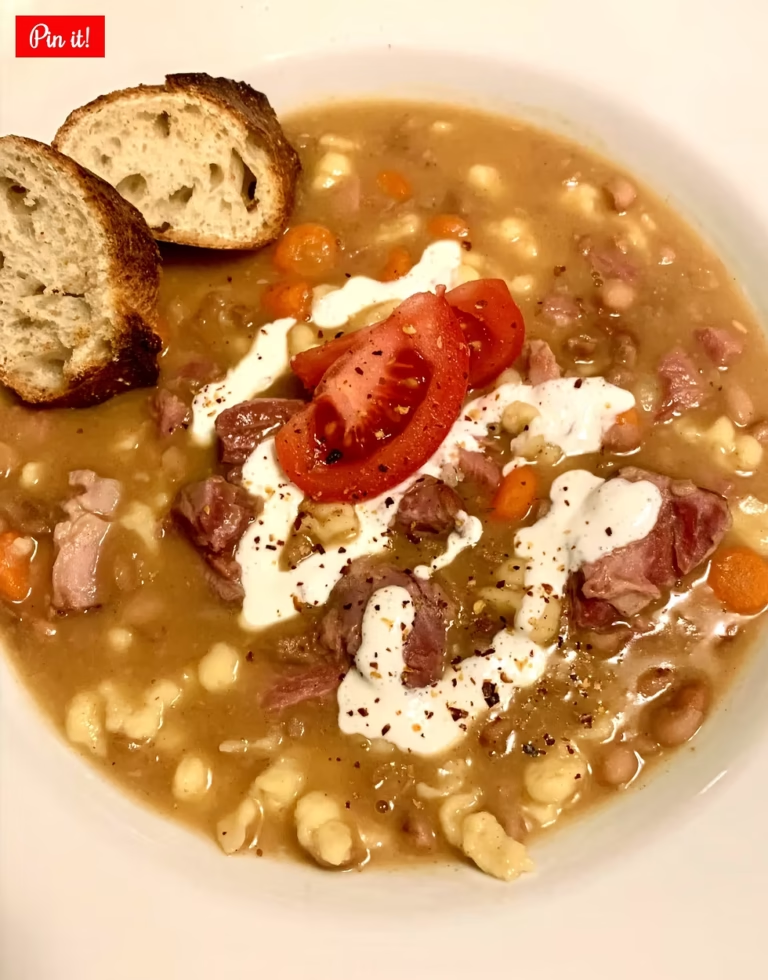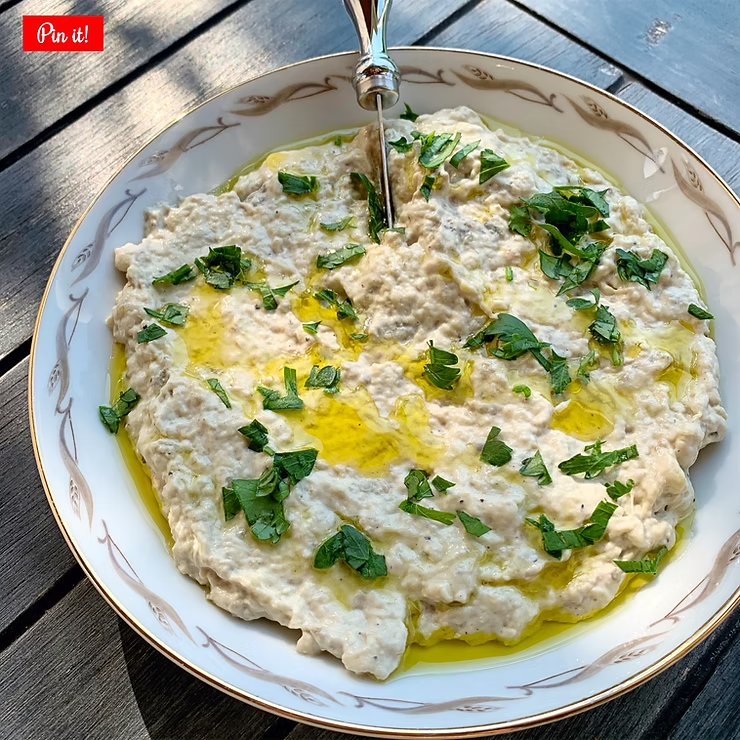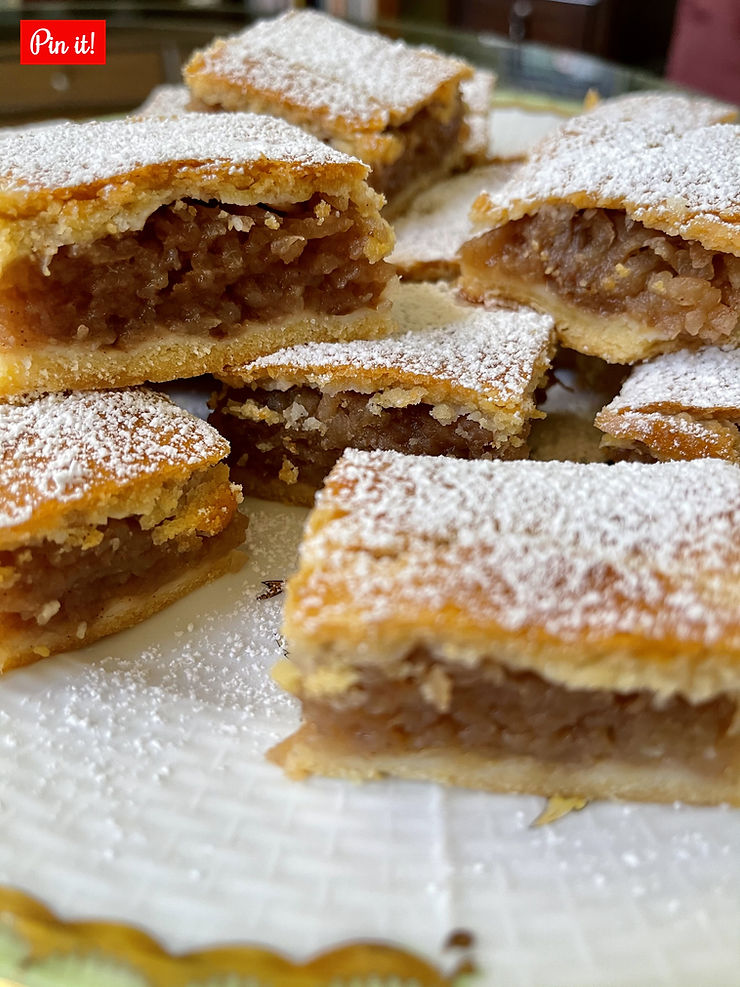Osso buco is a popular northern Italian main course that originated in Milan in the 1800s. While sounding quite fancy, it is simply meaty veal shanks braised in yummy vegetables, wine, and stock. This rustic veal stew is perfect for the fall and winter months. I particularly think that this is one of those dishes that tastes EVEN BETTER when reheated and served the next day after the flavors have a chance to really meld together. As such, it is ideal for entertaining for it can be prepared in advance. In Milan, osso buco is famously served with Risotto alla Milanese, which is a Saffron Risotto. To honor that tradition, I will serve it with such for this blog, and share the recipe for each. However, I particularly enjoy MY osso buco over, some not so traditional, Capellini pasta with a sprinkle of Pecorino Romano cheese … shhhh 🤫. Pasta is a more common accompaniment to osso buco in regions of Italy south of the Po River.
Osso buco, sometimes written as one word ossobuco, is Italian for “bone with a hole”. This is in reference to the delectable marrow in the center of the cross-cut shank bone, which is the prized delicacy of this dish. Although quite flavorful, the shank meat (from the shin) is typically tougher meat but becomes very tender when slowly braised for a couple of hours. During that long braising time, the bone marrow often oozes into the stew lending rich flavor and texture to the sauce. If not, you can enjoy the marrow after removing it from the bone with a long, slender fork or spoon. You can also vary the wine-stock combination according to your taste preference, using either white wine with chicken stock or red wine with beef stock. I make it both ways and really love them both, although the white wine variant is more common. The vegetable mixture, consists of the Italian soffritto triad of onions, celery, and carrots, in addition to some chopped tomatoes, and garlic.
In Italy, risotto, a creamy rice dish is typically served as a first course or primo piatto, prior to the main course. When served with osso buco, however, an exception is made as risotto accompanies the veal shanks on one plate as the main course! Risotto is a popular staple in northern Italy, particularly since its regions of Lombardia and Piedmont, are famous for their rice production. Pearly plump grains, like Arborio, are preferred due to their high starch content which accounts for the delicious creaminess that we expect from a good risotto. Some important steps when making risotto are toasting the rice (tostatura), adding stock a little at a time, stirring frequently but not continuously such that the risotto neither burns nor gets mushy, adding butter and Parmesan cheese once risotto is fully cooked (mantecatura) which imparts creaminess and depth to the dish. Many variations of risotto can be prepared by incorporating different ingredients such as seafood, asparagus, mushrooms, peas, pancetta, and truffles, to name a few. Risotto alla Milanese traditionally incorporates onions and saffron, imbuing the dish with a bright yellow color.
Osso buco recipe
Ingredients (serves 4)
salt and pepper
~1/4 cup flour
~4 tbsp olive oil
~2 tbsp butter
2 onions, diced
3 celery sticks, diced
4 carrots, diced
4 large cloves of garlic, minced
1 cup wine (dry white or red)
1-2 sprigs of fresh rosemary
few sprigs of fresh thyme
28 oz can San Marzano peeled tomatoes; with juice, coarsely chopped
2 tbsp tomato paste
1 1/2 cups of stock (chicken or beef)
1 tbsp balsamic vinegar
1 cup milk

Season the veal shanks on both sides with salt and pepper. Lightly dredge them in the flour, shaking off excess. In a large Dutch oven, melt 2 tbsp of butter and add 2 tbsp of olive oil. Mix together over medium heat. Increase heat to medium-high and brown the shanks on both sides. Once browned, remove from pan and set aside.
Dice the onions, celery, carrots. Add two more tbsp of olive oil to the Dutch oven and adjust the burner to medium. Add the diced veggie mixture. Once veggies slightly softened, add the minced garlic. Stir well and cook just a bit longer, taking care that garlic doesn’t burn. Add the cup of wine! Stir well scraping up any brown bits from the bottom of the pan. Cook the wine off completely before adding anything else.
Once the wine is cooked off, add the sprigs of herbs. Add the can of tomatoes, coarsely chopped, along with the juice. (I typically pulse the whole tomatoes a few times in my food processor). Add the tomato paste, stock, balsamic vinegar, and milk. Mix to combine and cook for a few of minutes. Return the shanks to the Dutch oven, submerging them into the mixture. Cover with the lid and place it into a pre-heated oven at 325 F. Braise in the oven for 2 hours, turning shanks over periodically.
After 2 hours the meat should be quite tender, nearly falling off the bone. Check the consistency of the sauce. I usually find that the sauce is perfect at this point. If you desire a thicker sauce then you can temporarily remove the shanks into a bowl and continue to thicken the sauce by leaving it in the oven a little longer.
You can serve it immediately, or let it cool and place in the refrigerator for a day to allow time for the flavors to really meld together. I’m not kidding when I tell you that this dish tastes even better when re-warmed a subsequent day. Your patience will be rewarded! Serve over the starch of your choice, that being risotto, pasta, polenta, mashed potatoes … or whichever.

Risotto alla Milanese recipe (Saffron Risotto)
Ingredients (serves 4)
2 tbsp butter
1 tbsp olive oil
1 small onion, finely diced
1 1/2 cups Arborio rice
1 glass of white sparkling wine ( I used Prosecco)
~ 4 cups stock (chicken or beef), warmed
generous pinch of saffron
salt to taste
pat of butter
2 tbsp grated parmesan Reggiano cheese

Melt butter in a heavy Dutch oven and add olive oil. Increase heat to medium-high. Add the diced onions and saute until golden color. Add the Arborio rice and toast for a couple minutes, stirring frequently so it doesn’t burn. Rice will begin to turn translucent with toasting. After rice is toasted, pour in one glass of white wine. mix well and let wine cook off.
Adjust burner to medium-low. Then begin adding ladlefuls of warm stock … enough to cover the rice by about one fingerbreadth. As the stock gets absorbed, re-add some more, a little at a time. Stir intermittently, but don’t over stir, as the risotto can get mushy. It will take about 25 minutes for the rice to become ‘al dente’.
Once the risotto is creamy and the rice is tender to chew, add the saffron and mix in. Taste, and season with salt and pepper, as desired. Let cook just a few minutes longer, then remove from heat.
Prior to serving, add a pat of butter and a couple tbsps of grated parmesan Reggiano. Cover with lid for a couple of minutes. Then stir well and serve.
Osso buco is deceptively easy to make. After the short prep, it’s just a long, slow braise in the oven. The flavors come together beautifully. I like to pair this meal with red wine, more commonly Cabernet Sauvignon or Rosso di Montalcino, but sometimes a Brunello, if I prepare it for a special occasion. Brunello is a full-bodied Tuscan wine made of 100% Sangiovese grapes. I encourage you to give this dish a try. Serve it with your favorite starch, and enjoy!





